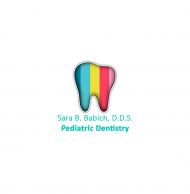Please save your profile to prevent losing your data!
Please save your profile to prevent losing your data!


Dental Cleanings or Prophylaxis (“prophy”) is an essential component of preventive dentistry. The goal is to remove microbial plaque which can cause gingivitis (gum inflammation), and cavities.
Only our professional staff can determine how frequently this must be done. Some patients accumulate tartar faster than others.
Silver Diamine Fluoride, SDF, is an alternative treatment for tooth decay under certain conditions. Treatment of children’s deciduous (primary or “baby”) and permanent (“adult”) teeth with silver diamine fluoride is a rather new strategy provided by pediatric dentist Dr. Babich located on Manhattan’s Upper East Side aimed at preventing tooth decay (dental caries) and at arresting existing tooth decay.
Tooth decay is a bacterial infection, in which bacteria of the oral cavity, the main culprit is Streptococcus mutans, metabolize dietary sugars to sticky polymers that allow them to adhere within a biofilm to the tooth surface. In addition, bacterial metabolism of dietary sugars forms acidic end-products that demineralize (i.e., soften) the enamel, the hard tooth outer surface.
If left unchecked, the bacterial infection will advance, burrowing deeper into the tooth structure, first into the dentin and thereafter to the pulp, which houses nerve endings and blood vessels. Recognizing that tooth decay is a bacterial disease, the strategy behind topical application of silver diamine fluoride to tooth surfaces is to inhibit bacterial growth in existing areas of decay and to prevent the occurrence of areas new decay.
Read more on how to prevent tooth decay and about an association between lead poisoning and tooth decay.
Everyone wants a “wow” smile. Although this starts with a healthy smile, a little extra whitening may be desired. Teeth whitening, a bleaching process to whiten or lighten tooth color, is most commonly accomplished with chemical oxidizing agents, such as hydrogen peroxide, alone or in the presence with light, acting as an activating agent.
Although considered a type of cosmetic dentistry, teeth whitening may be an important psychological boost to a person, whether an adolescent or an adult, embarrassed by off-colored or stained teeth. Focus on the whiteness of one’s teeth may be an off-shoot of media perceptions of unrealistic beauty that is imposed upon the general public.
However, as noted by the American Academy of Pediatric Dentistry, a negative self image due to discolored teeth can evoke serious consequences for kids and teens.
Many factors interact to cause discoloration of teeth. Tooth discoloration is a function of the age of an individual and of environmental lifestyle choices. Teeth darken as we age. Underneath the enamel, the hard, outer white covering of a tooth, is the softer region termed the dentin, with a yellowish tinge. As one ages, the enamel thins thereby allowing the yellow dentin to be more pronounced.
Tooth removal can be intimidating and a little scary for anyone. Unfortunately, as a parent, you may be a little nervous too. Please let us guide your child to soothe, calm, and help them. It is best not to precondition a child with fears and doubts. As a parent, you can take the time to talk with Dr. Sara, an extraction specialist and a leading children’s dentist in NYC. She will be more than happy to cover all the kids tooth extraction details and help you fully understand the removal procedure. That way, everyone can be prepared for the tooth extraction experience, recovery and its aftercare.
The American Dental Association estimates that athletes who don’t wear mouthguards are sixty times more likely to suffer dental injury than those who do.
Dental mouth guards typically cover the upper teeth and also protect the soft tissues of the tongue, lips and cheek lining.
I consider wearing a mouth guard mandatory in contact and collision sports including:
A mouth guard can also prevent injury in non-contact sports, such as bicycling, skating, skateboarding and gymnastics. Hits to the face in those sports may be accidental, but they are just as damaging.
Dental sealants are a great way to protect your growing child’s teeth from cavities. Sealants can prevent decay by as much as 80 percent, according to the American Dental Association (ADA.) A relatively recent advance in children’s dentistry, dental sealants for kids teeth help avoid much more costly dental restorations. It’s a win-win!
Dental sealants are protective plastic coatings applied to the chewing surfaces of primary (baby) and permanent (adult) molars to prevent tooth crevices from trapping food particles and bacteria. Sealants are recommended by the ADA and the American Academy of Pediatric Dentistry (AAPD).
Sealants act as a barrier to food, plaque and acid to protect the decay-prone areas of the teeth. The back teeth are the ones that are most likely to show signs of decay, so it is important to take this extra step to help protect them.
Sealants are applied when molars erupt beyond the gums, generally between five and 10 years of age. They and are not typically visible when a child laughs, talks, or smiles. While sealants can last for many years, they need to be maintained and evaluated for wear, and occasionally require touch-ups.
Pediatric Dentistry Dr. Sara B. Babich, DDS information on Health Beyond Insurance (HBI) platform is intended for consumers to connect with Pediatric Dentistry Dr. Sara B. Babich, DDS, and to provide helpful information to consumers regarding providers' products and services. HBI does not endorse, guarantee, or warrant the products or services of Pediatric Dentistry Dr. Sara B. Babich, DDS, and HBI is not an agent, or representative of, or otherwise responsible for or on behalf of, Pediatric Dentistry Dr. Sara B. Babich, DDS. HBI never makes any medical decisions for you or on your behalf, nor does HBI ever take any medical action in response to information transmitted or received by the Pediatric Dentistry Dr. Sara B. Babich, DDS. HBI does not take part in any medical diagnoses, procedures, or recommendations, or in any medical, prescription, service.